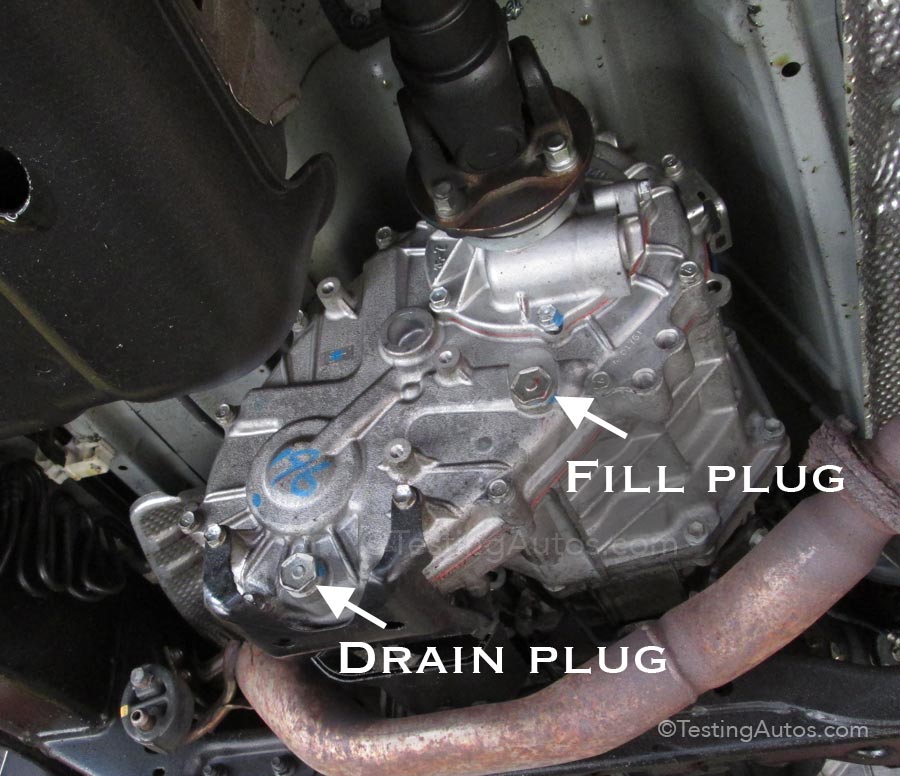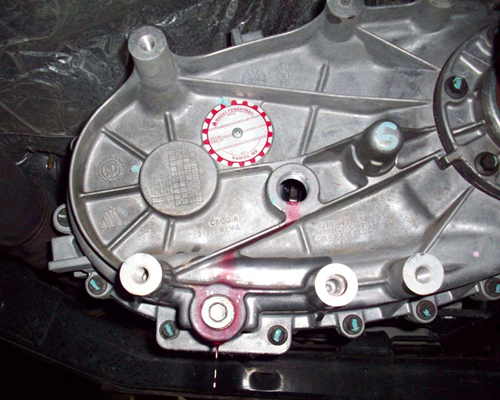Changing transfer case fluid is crucial for maintaining your vehicle’s performance. It ensures smooth gear shifts and protects internal components from wear.
Regular maintenance of your transfer case fluid can prevent costly repairs down the road. This fluid lubricates the gears in your vehicle’s transfer case, which is essential for proper functioning. Over time, the fluid can become contaminated or degrade, leading to potential damage.
By changing the transfer case fluid at recommended intervals, you help keep your vehicle running smoothly and extend its lifespan. This simple maintenance task can save you from more extensive and expensive issues later. In this guide, we’ll walk you through the steps to change your transfer case fluid effectively and safely.
Introduction To Transfer Case Fluid
The transfer case fluid is an essential component in four-wheel-drive (4WD) and all-wheel-drive (AWD) vehicles. It ensures that the vehicle’s transfer case operates smoothly. The transfer case is responsible for distributing power from the transmission to the front and rear axles. Keeping the transfer case fluid in good condition is crucial for maintaining optimal vehicle performance.
What Is Transfer Case Fluid?
Transfer case fluid is a lubricant designed to protect and cool the gears and components within the transfer case. It reduces friction and prevents wear. Transfer case fluid can be either oil-based or synthetic. The type of fluid used depends on the vehicle manufacturer’s specifications.
- Oil-based transfer case fluid: Common in older vehicles.
- Synthetic transfer case fluid: More efficient and used in modern vehicles.
Regularly checking and replacing the transfer case fluid is vital. This ensures the transfer case remains in good working condition.
Importance In Vehicle Performance
The transfer case fluid plays a significant role in vehicle performance. It ensures the transfer case functions efficiently. Here are some key benefits of maintaining proper transfer case fluid levels:
- Enhanced Lubrication: Reduces friction between moving parts.
- Temperature Regulation: Helps dissipate heat generated by the transfer case.
- Extended Component Life: Prevents wear and tear, extending the lifespan of transfer case components.
- Improved Fuel Efficiency: A well-lubricated transfer case operates more smoothly, leading to better fuel economy.
Neglecting transfer case fluid maintenance can lead to severe damage. This can result in costly repairs and reduced vehicle performance.
Understanding the importance of transfer case fluid helps ensure your vehicle remains reliable. Regular maintenance is key to a smooth driving experience. Always follow the vehicle manufacturer’s recommendations for fluid type and change intervals.

Credit: www.testingautos.com
Signs It’s Time To Change Transfer Case Fluid
Knowing the signs that it’s time to change transfer case fluid can save you from costly repairs. Your vehicle’s transfer case is vital for your four-wheel-drive system. It’s important to keep it well-maintained. Here are some key indicators that your transfer case fluid needs changing.
Warning Lights
One of the first signs is the warning lights on your dashboard. If you see the 4WD or service light, it’s a clear indication. These lights mean the system has detected an issue. Check the fluid level and quality immediately. Ignoring these lights can lead to severe damage.
Strange Noises
Another sign is hearing strange noises while driving. These could be grinding, whining, or clunking sounds. Such noises often signal that the transfer case fluid is low or dirty. Clean fluid ensures smooth operation. Dirty fluid can cause parts to wear out faster.
Difficulty Shifting Gears
If you experience difficulty shifting gears, it could be due to old transfer case fluid. Shifting should be smooth and effortless. Hard or delayed shifting is a red flag. Fresh fluid helps the gears engage properly. Don’t ignore this sign, as it can lead to bigger issues.
Benefits Of Changing Transfer Case Fluid
Changing the transfer case fluid in your vehicle offers numerous benefits. It plays a crucial role in maintaining your vehicle’s overall health. Regular maintenance ensures your vehicle runs smoothly and efficiently.
Improved Vehicle Performance
Fresh transfer case fluid helps improve your vehicle’s performance. It reduces friction within the transfer case. This leads to smoother gear shifts and better power delivery. Your vehicle handles better on rough terrains and slippery roads. Regular fluid changes keep your vehicle performing at its best.
Extended Component Lifespan
Changing the transfer case fluid extends the lifespan of components. Fresh fluid reduces wear and tear on gears and bearings. It prevents metal particles from causing damage inside the transfer case. This maintenance step helps you avoid costly repairs. It ensures your vehicle’s parts last longer.
Enhanced Fuel Efficiency
Regularly changing the transfer case fluid enhances fuel efficiency. Fresh fluid reduces friction, leading to less energy consumption. Your engine doesn’t have to work as hard, saving fuel. Improved fuel efficiency means fewer trips to the gas station. It also helps reduce your overall fuel costs.
Tools And Materials Needed
Changing the transfer case fluid is essential for maintaining your vehicle’s performance. To get started, you need the right tools and materials. This section outlines what you will need.
Essential Tools
- Socket Set: A complete socket set is necessary for removing the drain and fill plugs.
- Ratchet Wrench: This tool provides the leverage needed for loosening and tightening bolts.
- Drain Pan: Use a drain pan to catch the old fluid and avoid spills.
- Funnel: A funnel helps pour the new fluid without making a mess.
- Torque Wrench: Ensures the plugs are tightened to the manufacturer’s specifications.
Recommended Fluids
Choosing the right fluid is crucial for the transfer case. Refer to your vehicle’s manual for the recommended type.
| Fluid Type | Suitable Vehicles |
|---|---|
| ATF+4 | Chrysler, Dodge, Jeep |
| Dexron III/Mercon | GM, Ford |
| Transfer Case Fluid | BMW, Mercedes |
Safety Equipment
Always prioritize safety when working on your vehicle. Here is the safety gear you will need:
- Gloves: Protect your hands from chemicals and sharp edges.
- Safety Glasses: Prevent debris and fluid from getting into your eyes.
- Protective Clothing: Wear old clothes or coveralls to avoid stains.
- Jack Stands: Use jack stands to secure the vehicle if you need to lift it.
Having these tools and materials ready will make the process smooth and safe. Proper preparation is key to successfully changing your transfer case fluid.
Step-by-step Guide To Changing Transfer Case Fluid
Changing the transfer case fluid is essential for maintaining your vehicle’s health. It ensures the gears in your transfer case run smoothly. This guide will help you change the fluid step-by-step. Follow these simple steps to keep your vehicle in top condition.
Preparation And Safety Measures
First, gather all needed tools and materials. You will need a wrench, a drain pan, new transfer case fluid, and a funnel. Wear safety gloves and goggles to protect yourself. Make sure your vehicle is parked on a level surface. Engage the parking brake for extra safety.
Draining Old Fluid
Locate the drain plug on the transfer case. Position the drain pan underneath it. Use the wrench to remove the drain plug. Let the old fluid drain completely into the pan. This may take a few minutes. Once the fluid has drained, clean the drain plug. Replace the plug securely.
Refilling With New Fluid
Find the fill plug on the transfer case. Remove it using the wrench. Insert the funnel into the fill hole. Pour the new transfer case fluid into the funnel. Fill until the fluid reaches the bottom of the fill hole. Carefully remove the funnel. Replace the fill plug and tighten it securely.
Check for any leaks around the plugs. Start your vehicle and let it run for a few minutes. This helps the new fluid circulate. Turn off the engine and check the fluid level again. Add more fluid if needed. Dispose of the old fluid properly at a recycling center.

Credit: www.youtube.com
Common Mistakes To Avoid
Changing the transfer case fluid in your vehicle is essential for maintaining its performance and longevity. However, there are common mistakes that many people make during this process. Avoiding these errors can save you time, money, and headaches down the road.
Using Incorrect Fluid
Using the wrong type of fluid in your transfer case can lead to severe damage. Always refer to your vehicle’s manual to ensure you use the recommended fluid type. Different transfer cases require specific fluids that match their design and material. Using the wrong fluid can cause poor lubrication, leading to increased wear and tear.
Overfilling Or Underfilling
Both overfilling and underfilling the transfer case can cause problems. Overfilling can lead to fluid foaming, which reduces its effectiveness. Underfilling can result in insufficient lubrication, causing overheating and damage to the transfer case components. Use the fill line on the transfer case or consult your manual for the correct fluid level.
Neglecting Regular Maintenance
Regular maintenance is crucial for the health of your transfer case. Neglecting to change the fluid at recommended intervals can lead to a buildup of contaminants. Over time, this can cause corrosion and wear, reducing the transfer case’s lifespan. Mark your calendar or set reminders to perform regular fluid changes as specified in your vehicle’s manual.
Maintenance Tips For Longevity
Maintaining your transfer case fluid is essential for the longevity of your vehicle. Regular checks and replacements can prevent costly repairs. Keep your vehicle running smoothly with these simple maintenance tips.
Regular Fluid Checks
Checking your transfer case fluid regularly ensures that it stays at the proper level. Low fluid can cause the transfer case to overheat. This can lead to serious damage.
Follow these steps for a quick fluid check:
- Park your vehicle on a level surface.
- Locate the transfer case fill plug.
- Remove the plug and inspect the fluid level.
- Check the fluid color and consistency.
Scheduled Fluid Replacements
Fluid replacements should be part of your regular maintenance schedule. Old fluid can become contaminated and less effective. This can lead to wear and tear on the transfer case.
Here’s a basic schedule you can follow:
| Mileage (miles) | Action |
|---|---|
| 30,000 | Check fluid level |
| 60,000 | Replace fluid |
Monitoring For Leaks
Fluid leaks can cause significant issues. Monitoring for leaks helps you catch problems early. Look for signs of fluid under your vehicle.
Here’s what to watch for:
- Puddles or stains on your driveway.
- A burning smell while driving.
- Strange noises when shifting gears.
If you notice any of these signs, inspect the transfer case immediately. Fixing leaks early can save you money and trouble down the road.

Credit: mygarageairdrie.ca
Frequently Asked Questions
Why Is It Important To Change Transfer Case Fluid?
Changing transfer case fluid prevents wear and tear. It ensures smooth operation and extends the life of your vehicle.
How Often Should Transfer Case Fluid Be Changed?
Transfer case fluid should be changed every 30,000 to 60,000 miles. Check your vehicle’s manual for specific intervals.
What Are The Signs Of Low Transfer Case Fluid?
Signs include strange noises, difficulty shifting gears, and fluid leaks. Check fluid levels regularly to avoid issues.
Can I Change Transfer Case Fluid Myself?
Yes, you can. Gather necessary tools, follow your vehicle’s manual, and be cautious. If unsure, seek professional help.
What Type Of Fluid Goes In A Transfer Case?
Use the fluid specified in your vehicle’s manual. Different vehicles require different types. Always use the recommended fluid.
Conclusion
Regularly changing transfer case fluid ensures your vehicle runs smoothly. It prevents wear and tear. Neglecting it can lead to costly repairs. Follow the steps in this guide to do it yourself. Keep your vehicle in top shape. Save money and time in the long run.
Remember, maintenance is key for longevity. Happy driving!
